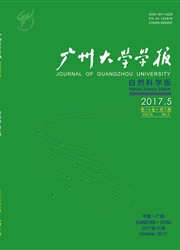

 中文摘要:
中文摘要:
工作记忆表征能否自上而下地引导视觉注意选择,目前研究结果尚存在争议,而导致争议结果的原因亦不清晰.为了探究导致以往研究中有无发现引导效应的关键因素,该研究设计3个实验,要求被试在工作记忆储存任务的过程中完成一个视觉搜索任务,实验1与3的结果发现,当工作记忆表征包含可引导注意的属性时,不管视觉搜索靶子是否变化,该记忆表征都会引导注意偏向到视觉情境中与之匹配的干扰刺激,而实验2中的工作记忆表征不包含可有效引导注意的属性时,即使采用变化靶子的视觉搜索类型,也没有发现引导效应,此结果表明基于工作记·亿表征的注意引导效应是否出现在一定程度上取决于该表征是否包含可有效引导注意的属性,而非视觉搜索类型.
 英文摘要:
英文摘要:
Whether the working memory (WM) representation could top-to-down guide the visual attention to select the relevant distractor in visual search is still controversial. Some researchers did find the WM based at- tentional guidance while others did not. The issue that what factors contribute to this discrepancy is also illusive yet. In order to resolve this issue, here, we designed three experiments in which the participants were required to perform a visual search task during the period of keeping some objects in WM. In Experiment 1, after exclu- ding the possible influences from WM load and search difficulty in the experiment 5 of Olivers (2009), we ob- served equivalent guidance effect both in fixed- and varied-target visual search. This result disobeyed the expla- nation that the visual search type was the key factor to determine whether the attentional guidance has been ob- served or not in the previous studies. Experiments 2 and 3 were to testify whether or not the stimulus attributes of WM representation determining the guidance could be observed. When the WM representation lacked attrib- utes that could guide attention in Experiment 2, we failed to observe any guidance effect. However, when the representation included some effective attributes to guide attention, such as color and shape, we observed stable guidance effect at all detected time course. These results in the present study suggested that the attentional guid- ance from WM was to some degree depended on whether the presentation involved effective attributes for guiding attention, but not visual search type.
 同期刊论文项目
同期刊论文项目
 同项目期刊论文
同项目期刊论文
 期刊信息
期刊信息
